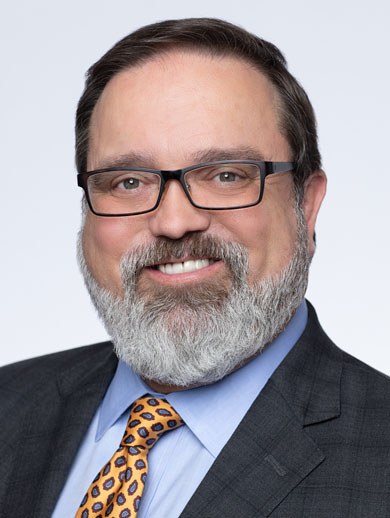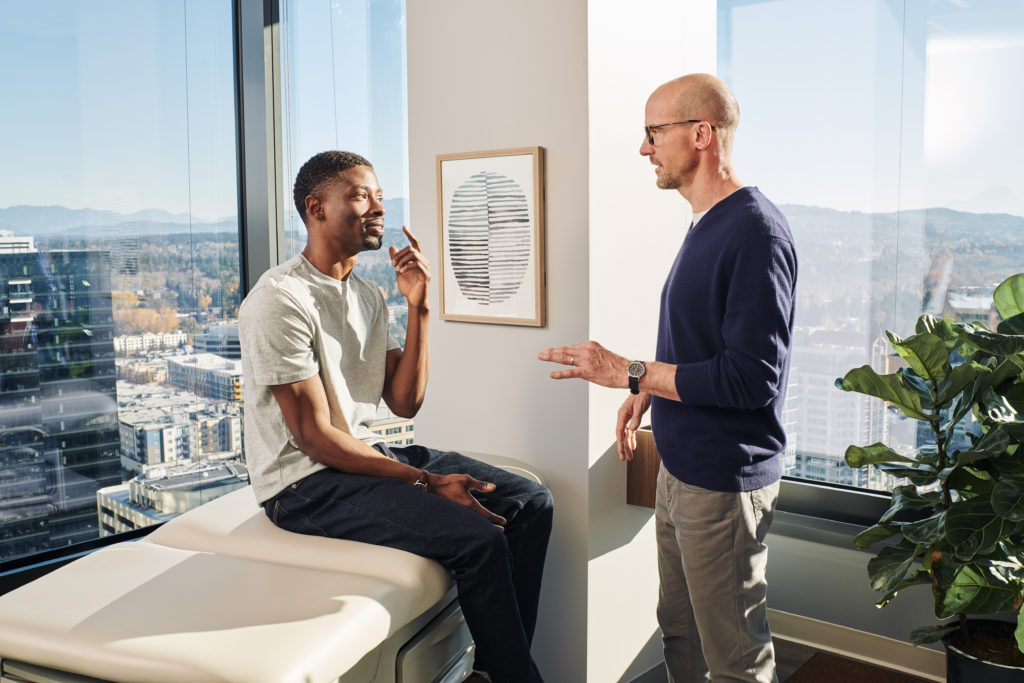The Evolving Role of Primary Care in Supporting Mental Health


Mike is a 58 year old with Type 2 diabetes. His kids are adults and, after losing his wife a couple months ago, he now lives alone. He tends toward the stoic and doesn’t talk a lot about his emotions. But he has noticed his blood sugar control isn’t great, and, at his annual physical, he tells his provider this. What the provider does next could have a huge impact on Mike’s physical and mental health.
Mike is a fictional case, but his situation is common. The experience of the pandemic has made clear that mental and physical health don’t exist in silos, but act on each other as a continuous feedback loop. Maybe Mike’s doctor will suggest therapy, but even if Mike is open to it, there is a shortage of mental health care providers. More likely, the provider won’t screen for depression and will just admonish Mike to be more careful with his diet. Maybe he will be scheduled for a follow-up appointment in three to six months.
There is a better way, and it is one that the primary-care provider One Medical is using to provide more comprehensive care that looks at the well-being of mind and body. It focuses on the primary-care provider as the person best placed to be guardian of both, said Andrew Bertagnolli, PhD, a clinical psychologist and One Medical’s national director of virtual behavioral health.
Imagine a young woman, just launching her career after college. We’ll call her Sharon. She has some residual anxiety and depression related to the lockdown and finishing her education virtually, without her peers. In many cases, if she were to go to her primary-care physician, she wouldn’t be asked about any mood disorders. There wouldn’t be a screen, Bertagnolli said. If her mental health were discussed, the provider would probably suggest medication. If Sharon didn’t want to go on meds, her provider might suggest she find a therapist. But for someone with depression or anxiety, that can be an overwhelming task, especially when she would have to sort through dozens of professionals that accept her insurance coverage, determine who is taking new patients, and find one she feels comfortable with who can see her in a relatively short time.
“Here, when someone comes for a visit, we screen for anxiety, depression, and substance use regularly,” Bertagnolli explained. The provider would ask Sharon about lifestyle situations like her new job and any stress she feels because of it, whether she is sleeping well, and how much caffeine she is having every day. “Many primary-care providers feel their main option is to recommend a medicine. Our folks may do that, or they may offer other types of interventions that have equal amounts of evidence but are often not used.”
Options for Sharon may include behavioral activation: doing things once or twice a day that she enjoys and that give her sense of accomplishment or mastery. The provider may suggest practicing mindfulness or meditation or relaxation therapy–another mode of care that One Medical providers are trained to provide coaching for. Sharon might benefit from therapy, and Bertagnolli said they have specific, virtual group therapy for anxiety. If Sharon is a person of color and would like to be in a group with people like her, there are separate groups she can join.
If indicated, there are brief, virtual therapy interventions available, and providers have access to psychiatric consultants to help providers better understand medications and manage cases where there are multiple conditions or multiple prescriptions. “We want the primary care provider at the center of the Sharon’s care,” he said.
Screening for Long-Term Follow-Up

Faith is a stressed-out mom. She has come in for her annual wellness exam, and she completes a nine-question depression screen. Her provider is concerned about the results. Faith has been on medication for her depression for a couple of years, and the screen helps the provider figure out whether or not her current treatment is working. She likes the medication method of treatment because she just doesn’t have time for therapy. Faith’s provider would counsel her on other proven methods to battle her depression, and might tweak her medication by dosage or type. The One Medical system would cue the provider to send another depression screen to the patient in a month to see if there has been any notable change in her mood. Faith gets the screening questionnaire through her One Medical app, which allows her to complete it quickly right on her phone.
“The happy path is that Faith is feeling better, and her symptoms are stable, or even reduced,” Bertagnolli said. Faith is asked through the app to report any medication side effects and how she is feeling in general. Virtual and in-person follow up options are also available.
But if Faith’s second screen doesn’t show improvement, or if it indicates she is having thoughts of harming herself or suicide, the provider is alerted, and a therapist will reach out to do an immediate safety check and assess the risks in a more in-depth manner.
In Case of Crisis
One Medical has a behavioral-health crisis line that’s available 24 hours a day. Calls are logged, and providers follow up with patients to determine the best path forward. The health care worker on the line addresses most problems in real time, but sends some people to the ER, or the worker will contact 911. “We aren’t crisis care, but we will get a patient that care when needed.” The regular screening for problems is designed to prevent crises and deal with issues when they are relatively small and easy to treat.
Bertagnolli lauds national efforts like the 988 crisis line that just launched. But providers aren’t notified when a patient uses it. If a patient ends up in the ER or a psychiatric unit, a provider may eventually find out, but the closed loop of the One Medical number ensures primary care providers are alerted to a crisis and are prompted to get in touch with a patient to develop a plan.
Not everyone who scores high on a depression or anxiety screening app has a mental health disorder, Bertagnolli said. Some physical ailments can cause symptoms. A thyroid disorder, for example, can cause depression or a racing heart. Situational depression can happen when a family member dies. “We ensure our primary care providers are trained to discern if something is a clinical disorder, or if it’s due to something else. Either way, we always follow up.”
Managing Chronic Illness
Chronic illness can affect mental health, and mental health can affect chronic illness. The case of 58-year-old Mike is a good example of that, and One Medical staff are trained to notice the interaction of mental and physical health, Bertagnolli said.
“We train our providers to know that moving from well-controlled illness to poorly controlled illness is a warning sign of other things. We train them to lean in to ask what else is going on,” Bertagnolli said. “The provider might ask Mike how he is doing emotionally in the months since his wife died. We strive to create an environment where he can share.”

Mike’s provider will make suggestions to him using a tool kit that includes plentiful local information and access to care managers who can help him find options beyond medication, like group or individual therapy, or even a local grief-support group. They discuss the options, and if Mike is reluctant to do in-person therapy, he will be directed to virtual options. The electronic health record will remind his provider to send Mike a follow-up questionnaire.
One Medical’s model is something Bertagnolli thinks other providers should emulate, going beyond the traditional model of primary care. “We do preventive care for strokes and heart attacks, but not for mental health. We wait until there is a crisis. We are trying to address things earlier to prevent severe disruption in patient lives and stress on the medical system.” The impact is not just on patients and their well-being, but on employers and society at large. People with poorly managed mental health incur four times the health care cost of those whose mental health is well-managed.
Mental health is a continuum, just like physical health, he said. Sometimes it’s better than others. Stressors will impact either or both. In the old-school medical system, mental health is in a silo separate from physical health. “We try to take that away and see emotional well-being as the same as physical well-being. The head, after all, is attached to the body.”
Editor’s note: From Day One thanks our partner who sponsored this story, One Medical.
Lisa Jaffe is a freelance writer who lives in Seattle with her son and a very needy rescue dog named Ellie Bee. She enjoys reading, long walks on the beach, and trying to get better at ceramics.
The From Day One Newsletter is a monthly roundup of articles, features, and editorials on innovative ways for companies to forge stronger relationships with their employees, customers, and communities.